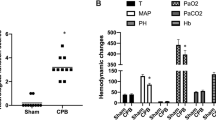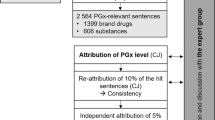Abstract
Introduction:
Propylene glycol (PG) is a common solvent used in medical preparations. It is generally recognized as safe at regulated concentrations; however, its apoptotic potential is unknown.
Results:
PG triggered widespread apoptotic neurodegeneration with the greatest damage at postnatal day 7 (P7). Significant apoptosis was observed at doses as low as 2 ml/kg. These findings have implications for the safety of drug preparations used in pediatric medicine. The anticonvulsant phenobarbital (PB), which alone produces apoptosis in the immature central nervous system (CNS) is prepared in 68% PG and 10% ethanol (EtOH). We assessed whether PG contributes to the neurotoxic potential of PB. The agents (both at subtoxic doses) produce significantly more apoptosis when used in combination.
Discussion:
In conclusion, finding an alternative non-apoptotic solvent that can be used as a substitute for PG may be beneficial to patients.
Methods:
C57BL/6 mice (P4–30) were exposed to PG to examine whether PG could produce apoptosis in the developing CNS.
Similar content being viewed by others
Log in or create a free account to read this content
Gain free access to this article, as well as selected content from this journal and more on nature.com
or
References
Lockshin RA, Zakeri Z . Programmed cell death and apoptosis: origins of the theory. Nat Rev Mol Cell Biol 2001;2: 545–50.
Ikonomidou C, Bittigau P, Ishimaru MJ,et al. Ethanol-induced apoptotic neurodegeneration and fetal alcohol syndrome. Science 2000;287: 1056–60.
Olney JW, Tenkova T, Dikranian K,et al. Ethanol-induced caspase-3 activation in the in vivo developing mouse brain. Neurobiol Dis 2002;9: 205–19.
Hanslick JL, Lau K, Noguchi KK,et al. Dimethyl sulfoxide (DMSO) produces widespread apoptosis in the developing central nervous system. Neurobiol Dis 2009;34: 1–10.
Dobbing J, Sands J . Comparative aspects of the brain growth spurt. Early Hum Dev 1979;3: 79–83.
Food and Drug Administration. GRAS status of propylene glycol and propylene glycol monostearate. Fed Regist 47:27810. 21 CFR 184.1666, 1982.
Joint FAO/WHO Expert Committee on Food Additives (JECFA). Toxicological evaluation of some food additives including anticaking agents, antimicrobials, antioxidants, emulsifiers and thickening agents. WHO Food Additives Series, No. 5, Geneva, 1974.
American Academy of Pediatrics. “Inactive” ingredients in pharmaceutical products Committee on Drugs. Pediatrics 1985;76: 635–43.
Martin G, Finberg L . Propylene glycol: a potentially toxic vehicle in liquid dosage form. J Pediatr 1970;77: 877–8.
Arulanantham K, Genel M . Central nervous system toxicity associated with ingestion of propylene glycol. J Pediatr 1978;93: 515–6.
Demey HE, Daelemans RA, Verpooten GA,et al. Propylene glycol-induced side effects during intravenous nitroglycerin therapy. Intensive Care Med 1988;14: 221–6.
Guillot M, Bocquet G, Eckart P,et al. [Home environment and acute propylene glycol intoxication in a two-year old. An unusual case report]. Arch Pediatr 2002;9: 382–4.
Yaucher NE, Fish JT, Smith HW, Wells JA . Propylene glycol-associated renal toxicity from lorazepam infusion. Pharmacotherapy 2003;23: 1094–9.
Wilson KC, Reardon C, Farber HW . Propylene glycol toxicity in a patient receiving intravenous diazepam. N Engl J Med 2000;343: 815.
Wilson KC, Reardon C, Theodore AC, Farber HW . Propylene glycol toxicity: a severe iatrogenic illness in ICU patients receiving IV benzodiazepines: a case series and prospective, observational pilot study. Chest 2005;128: 1674–81.
Bledsoe KA, Kramer AH . Propylene glycol toxicity complicating use of barbiturate coma. Neurocrit Care 2008;9: 122–4.
Miller MA, Forni A, Yogaratnam D . Propylene glycol-induced lactic acidosis in a patient receiving continuous infusion pentobarbital. Ann Pharmacother 2008;42: 1502–6.
Food and Drug Administration. March 8. Drug Safety Communication: Serious health problems seen in premature babies given Kaletra (lopinavir/ritonavir) oral solution, 2011. (http://www.fda.gov/Drugs/DrugSafety/ucm246002.htm#safety_announcement.)
Chicella M, Jansen P, Parthiban A,et al. Propylene glycol accumulation associated with continuous infusion of lorazepam in pediatric intensive care patients. Crit Care Med 2002;30: 2752–6.
Shehab N, Lewis CL, Streetman DD, Donn SM . Exposure to the pharmaceutical excipients benzyl alcohol and propylene glycol among critically ill neonates. Pediatr Crit Care Med 2009;10: 256–9.
Bittigau P, Sifringer M, Genz K,et al. Antiepileptic drugs and apoptotic neurodegeneration in the developing brain. Proc Natl Acad Sci USA 2002;99: 15089–94.
Farber NB, Olney JW . Drugs of abuse that cause developing neurons to commit suicide. Brain Res Dev Brain Res 2003;147: 37–45.
Kuan CY, Roth KA, Flavell RA, Rakic P . Mechanisms of programmed cell death in the developing brain. Trends Neurosci 2000;23: 291–7.
Kerr JF, Wyllie AH, Currie AR . Apoptosis: a basic biological phenomenon with wide-ranging implications in tissue kinetics. Br J Cancer 1972;26: 239–57.
Ishimaru MJ, Ikonomidou C, Tenkova TI,et al. Distinguishing excitotoxic from apoptotic neurodegeneration in the developing rat brain. J Comp Neurol 1999;408: 461–76.
Lu C, Mattson MP . Dimethyl sulfoxide suppresses NMDA- and AMPA-induced ion currents and calcium influx and protects against excitotoxic death in hippocampal neurons. Exp Neurol 2001;170: 180–5.
Ikonomidou C, Bosch F, Miksa M,et al. Blockade of NMDA receptors and apoptotic neurodegeneration in the developing brain. Science 1999;283: 70–4.
Lau K, McLean WG, Williams DP, Howard CV . Synergistic interactions between commonly used food additives in a developmental neurotoxicity test. Toxicol Sci 2006;90: 178–87.
Berenbaum MC . What is synergy? Pharmacol Rev 1989;41: 93–141.
Glasgow AM, Boeckx RL, Miller MK, MacDonald MG, August GP, Goodman SI . Hyperosmolality in small infants due to propylene glycol. Pediatrics 1983;72: 353–5.
Fligner CL, Jack R, Twiggs GA, Raisys VA . Hyperosmolality induced by propylene glycol. A complication of silver sulfadiazine therapy. JAMA 1985;253: 1606–9.
Wozniak DF, Hartman RE, Boyle MP,et al. Apoptotic neurodegeneration induced by ethanol in neonatal mice is associated with profound learning/memory deficits in juveniles followed by progressive functional recovery in adults. Neurobiol Dis 2004;17: 403–14.
Olney JW, Wozniak DF, Farber NB, Jevtovic-Todorovic V, Bittigau P, Ikonomidou C . The enigma of fetal alcohol neurotoxicity. Ann Med 2002;34: 109–19.
Paxinos G, Halliday G, Watson C, Koutcherov Y, Wang H . Atlas of the Developing Mouse Brain. Amsterdam, The Netherlands Elsevier, 2007.
Author information
Authors and Affiliations
Corresponding author
Rights and permissions
About this article
Cite this article
Lau, K., Swiney, B., Reeves, N. et al. Propylene glycol produces excessive apoptosis in the developing mouse brain, alone and in combination with phenobarbital. Pediatr Res 71, 54–62 (2012). https://doi.org/10.1038/pr.2011.12
Received:
Accepted:
Published:
Issue date:
DOI: https://doi.org/10.1038/pr.2011.12



